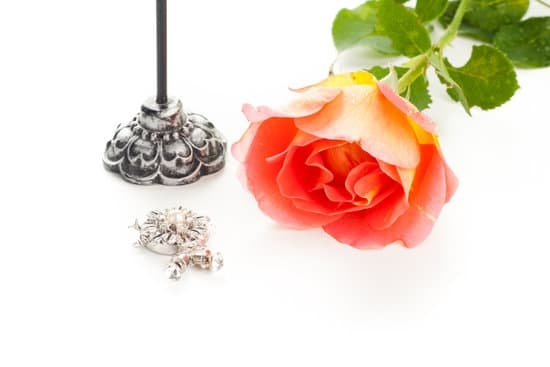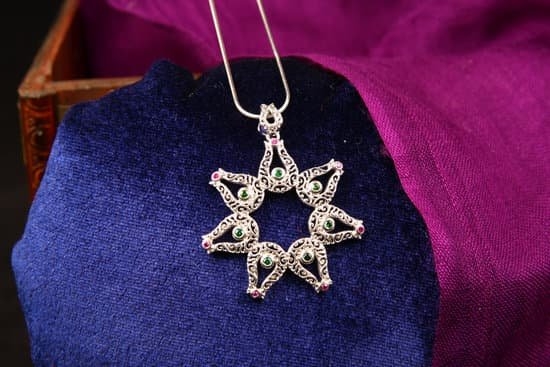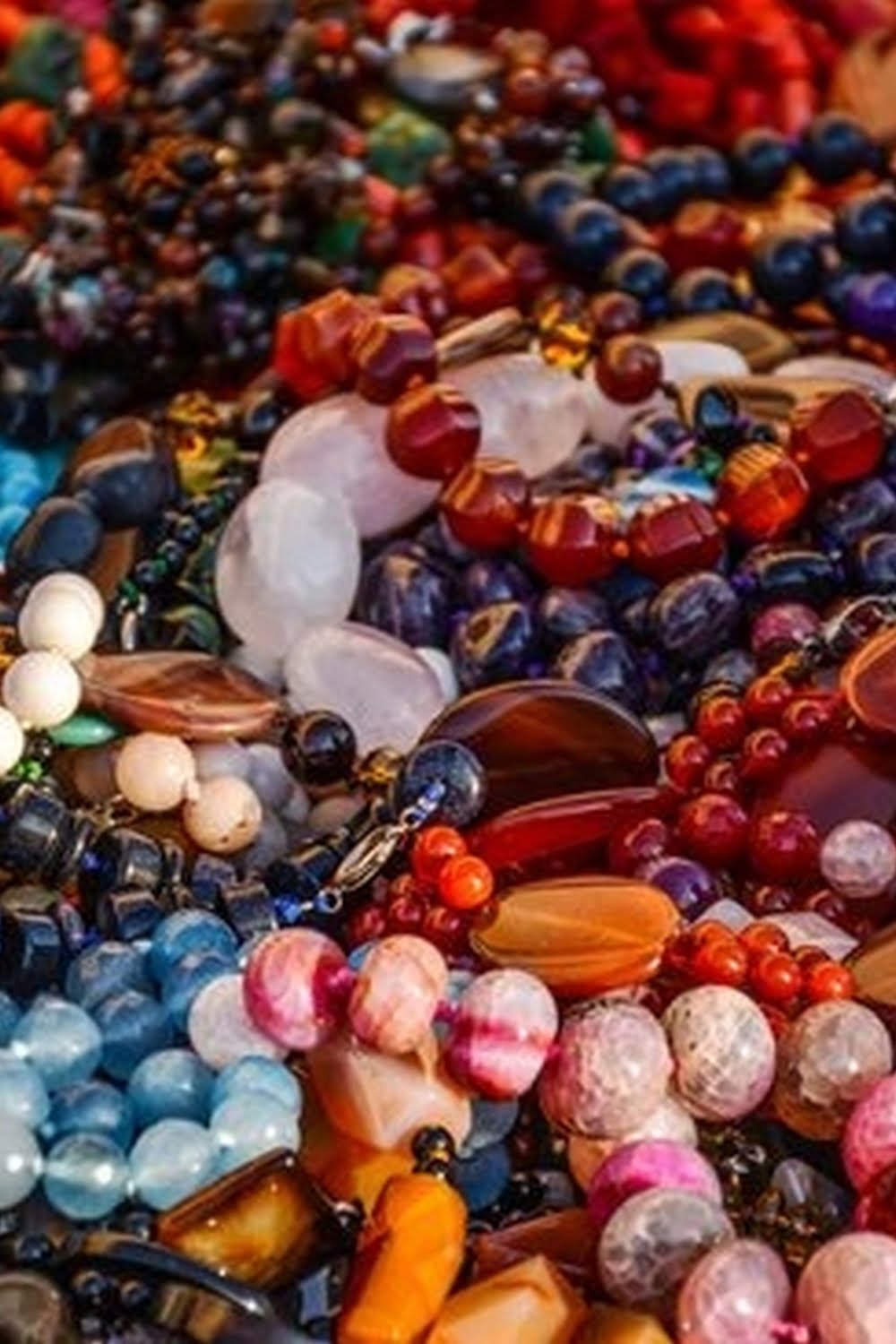De Beers, the renowned diamond company with a long-standing dominance in the industry, is making waves once again. In a surprising move, De Beers has announced its decision to enter the lab-grown diamond market and begin selling lab-grown diamond jewelry. This significant shift marks a new chapter for the company and highlights the growing popularity of sustainable alternatives in the jewelry industry.
For decades, De Beers has been synonymous with natural diamonds, holding a firm grip on the diamond supply chain through its mining operations and meticulous control of distribution. The company’s name has become synonymous with luxury and prestige in the world of diamonds. However, De Beers’ decision to venture into lab-grown diamonds reveals an evolving mindset within the industry.
Lab-grown diamonds are created through a growth process that replicates the conditions under which natural diamonds form deep within the Earth. They possess remarkably similar chemical, physical, and optical properties to their naturally occurring counterparts. As consumers become more conscientious about sustainability and ethical sourcing, lab-grown diamonds have gained traction as a sustainable and conflict-free option.
In this article, we will delve into De Beers’ surprising entrance into the lab-grown diamond market. We will explore the rise of lab-grown diamonds in the jewelry industry and analyze De Beers’ motivations behind this shift.
Additionally, we will provide an overview of De Beers’ lab-grown diamond collection and examine how this move may impact the natural diamond industry. Finally, we will evaluate consumer responses to this new development and discuss future market trends in the lab-grown diamond industry.
As De Beers embraces lab-grown diamonds, it signals an evolution in our perception and value of these precious gemstones. Stay tuned as we unravel the implications of this momentous decision by one of the most influential players in the diamond industry – De Beers.
Understanding Lab-Grown Diamonds
Lab-grown diamonds, also known as synthetic diamonds or cultured diamonds, are becoming increasingly popular in the jewelry industry. Understanding the process of creating lab-grown diamonds and their properties is essential for consumers looking to make informed choices when purchasing jewelry.
Growth Process
Lab-grown diamonds are created through a process called Chemical Vapor Deposition (CVD) or High-Pressure High-Temperature (HPHT) synthesis. In the CVD method, a diamond seed is placed in a vacuum chamber filled with carbon-rich gases.
These gases are then heated to extreme temperatures, causing carbon atoms to deposit and crystallize on the seed, layer by layer, forming a diamond over time. On the other hand, HPHT involves subjecting a small diamond seed to high pressures and temperatures, mimicking the conditions under which natural diamonds are formed deep within the Earth.
Properties Comparison
In terms of their chemical composition, lab-grown diamonds have an identical crystal structure to natural ones – both consist entirely of carbon atoms arranged in a diamond cubic lattice. Additionally, lab-grown diamonds possess similar physical properties such as hardness and thermal conductivity. They also exhibit similar optical properties like brilliance and sparkle due to their ability to refract light.
While there may be subtle differences between lab-grown and natural diamonds that gemologists can identify using specialized instruments, such distinctions are often imperceptible without professional testing equipment. Therefore, for most consumers who simply appreciate the beauty and elegance of diamonds, lab-grown stones provide an affordable alternative that offers comparable visual appeal.
By understanding how lab-grown diamonds are created and their similarities with natural ones in terms of chemical, physical, and optical properties, consumers can make well-informed decisions about their diamond jewelry purchases based on personal preferences and values.
The Rise of Lab-Grown Diamonds in the Jewelry Industry
The jewelry industry has experienced a significant shift in recent years with the rise of lab-grown diamonds. Lab-grown diamonds, also known as synthetic or cultured diamonds, are created through a process that simulates the natural formation of diamonds under high pressure and temperature conditions. These diamonds have gained popularity and acceptance among consumers due to multiple factors.
One key reason behind the growing demand for lab-grown diamonds is their sustainability. Traditional diamond mining often raises concerns about the environmental impact and carbon emissions associated with extraction processes. Lab-grown diamonds, on the other hand, have a lower carbon footprint and do not contribute to deforestation or displacement of wildlife habitats. As consumers become more conscious about sustainability and seek out eco-friendly alternatives, lab-grown diamonds provide an attractive option that aligns with their values.
Additionally, lab-grown diamonds offer a conflict-free choice for those who are concerned about ethical sourcing. The diamond industry has long grappled with issues related to conflict or blood diamonds, which are mined in war zones and used to finance armed conflicts against governments.
By choosing lab-grown diamonds, consumers can be assured that their purchase does not support these unethical practices. As awareness about conflict-free alternatives grows, more individuals are opting for lab-grown diamond jewelry as an ethical statement.
Furthermore, lab-grown diamonds often come at a more affordable price point compared to natural diamonds. With advancements in technology and manufacturing processes, the costs associated with producing laboratory-created diamonds have decreased over time. This affordability allows customers to own high-quality diamond jewelry without having to compromise on design or style. As a result, lab-grown diamond jewelry has become increasingly accessible and appealing to a wider range of consumers.
Overall, the rise of lab-grown diamonds in the jewelry industry reflects shifting consumer preferences towards sustainable and conflict-free options that do not sacrifice quality or beauty. This increasing acceptance of lab-grown diamonds has paved the way for renowned industry players like De Beers to enter the market, offering their own lab-grown diamond jewelry collections and expanding the availability of these alternative diamonds to a larger audience.
De Beers’ Motivation behind the Shift
De Beers’ decision to enter the lab-grown diamond market is a significant shift for the company, and understanding their motivation behind this move can provide valuable insights into the evolving landscape of the diamond industry. There are several factors that may have influenced De Beers’ decision.
Firstly, market competition plays a crucial role in shaping companies’ strategies, and De Beers is no exception. Over the past few years, lab-grown diamonds have been gaining traction in the jewelry industry, appealing to younger consumers who prioritize sustainability and ethical sourcing. By entering this growing market segment, De Beers can expand its customer base and tap into new revenue streams.
Secondly, consumer demand for sustainable and conflict-free alternatives has been steadily growing. Traditional diamond mining has faced scrutiny over issues such as environmental impact and unethical practices. Lab-grown diamonds offer an attractive solution as they are produced in controlled environments with minimal environmental impact and without contributing to conflicts associated with natural diamond mining.
Lastly, De Beers’ decision may also stem from their own sustainability initiatives. The company has been taking steps to reduce its carbon footprint and embrace more responsible practices. By selling lab-grown diamonds alongside natural ones, De Beers can position itself as a leader in sustainability within the industry.
These factors together suggest that De Beers sees an opportunity to diversify its offerings and meet changing consumer preferences by entering the lab-grown diamond market. By doing so, they can align themselves with increasing demands for sustainability while continuing to leverage their brand reputation and expertise in the diamond industry.
| Factor | Motivation |
|---|---|
| Market Competition | Expand customer base, tap into new revenue streams |
| Consumer Demand for Sustainability | Address ethical and environmental concerns |
| Sustainability Initiatives | Position as industry leader in sustainability |
De Beers’ Lab-Grown Diamond Collection
De Beers, the renowned diamond company with a historical dominance in the industry, has made a significant shift by entering the lab-grown diamond market. As part of this new venture, De Beers is introducing its own collection of lab-grown diamond jewelry. This collection aims to provide consumers with high-quality, sustainable alternatives to natural diamonds.
De Beers’ lab-grown diamond collection offers a wide range of choices for customers seeking ethical and environmentally friendly options. The designs of these lab-grown diamond pieces are crafted to showcase the beauty and brilliance inherent in these man-made gems. Whether it’s engagement rings, earrings, necklaces, or bracelets, De Beers’ lab-grown diamond collection ensures that there is something for everyone.
In terms of quality, lab-grown diamonds are virtually indistinguishable from natural diamonds. They possess the same physical and chemical properties as their mined counterparts. This means that customers can enjoy all the features they love about natural diamonds, such as clarity, colorless appearance, and exceptional durability with their purchase from De Beers’ lab-grown diamond collection.
Pricing is another factor that sets De Beers’ lab-grown diamond collection apart. Compared to natural diamonds, lab-grown diamonds typically come at a lower price point due to their manufacturing process. By offering competitively priced lab-grown diamonds, De Beers aims to make these sustainable alternatives more accessible and appealing to a wider range of consumers.
Key Features of De Beers’ Lab-Grown Diamond Collection
- Stunning designs crafted to highlight the beauty and brilliance of each lab-grown diamond.
- High-quality lab-created diamonds that possess the same physical and chemical properties as natural diamonds.
- Competitive pricing that makes sustainable alternatives more accessible to consumers.
With its entry into the lab-grown diamond market and the introduction of its own collection, De Beers is embracing innovation and aligning with changing consumer preferences for sustainable and ethical choices. This move not only expands De Beers’ market presence but also demonstrates the growing demand for lab-grown diamonds in the jewelry industry.
As consumers become more conscious of the origin and environmental impact of their purchases, De Beers’ lab-grown diamond collection provides a compelling option that combines beauty with sustainability.
Implications for the Natural Diamond Industry
The entry of De Beers into the lab-grown diamond market has significant implications for the natural diamond industry. As one of the world’s leading diamond producers, De Beers’ decision to embrace lab-grown diamonds reflects a changing landscape in the jewelry industry. This section will examine how De Beers’ entry into the lab-grown diamond market impacts the natural diamond industry and discuss potential challenges and opportunities for traditional diamond mining.
One major implication of De Beers’ shift towards lab-grown diamonds is the potential disruption it poses to natural diamond mining operations. Natural diamonds have long been associated with luxury and exclusivity, but lab-grown diamonds offer an alternative that is more affordable and sustainable. With De Beers entering this market, it could potentially divert consumers away from purchasing natural diamonds, leading to a decrease in demand for mined diamonds.
Additionally, De Beers’ move may also impact the perception of natural diamonds within the market. Historically, natural diamonds have been marketed as rare and valuable due to their scarcity, but the emergence of lab-grown diamonds challenges this notion. The increasing acceptance of lab-grown diamonds as a legitimate alternative could erode consumer sentiment towards natural diamonds, raising questions about their intrinsic value.
Despite these challenges, there are also potential opportunities for traditional diamond mining in response to De Beers’ entry into the lab-grown diamond market. Some consumers may still prefer natural diamonds for their unique characteristics and emotional significance. Furthermore, there could be room for differentiation within the luxury segment of the market where rarity and exclusivity continue to hold sway.
| Implications for Natural Diamond Industry | Description |
|---|---|
| Disruption to Natural Diamond Mining Operations | De Beers’ shift towards lab-grown diamonds may divert consumers away from purchasing mined diamonds. |
| Impact on Perception of Natural Diamonds | The emergence of lab-grown diamonds challenges the perception of natural diamonds as rare and valuable. |
| Potential Opportunities for Traditional Diamond Mining | Some consumers may still prefer natural diamonds for their unique characteristics and emotional significance. |
Consumer Response and Market Outlook
The announcement of De Beers entering the lab-grown diamond market has generated significant interest and speculation among consumers. As lab-grown diamonds gain popularity, more and more consumers are considering them as an alternative to natural diamonds. This shift in consumer preferences can be attributed to various factors.
One major factor driving the increasing acceptance of lab-grown diamonds is their sustainability. As consumers become more conscious about the environmental impact of their purchases, lab-grown diamonds offer a sustainable and ethical choice. They are created in a controlled laboratory environment using minimal resources, reducing the need for large-scale mining operations that can have detrimental effects on ecosystems.
Another reason behind the growing demand for lab-grown diamonds is their conflict-free origin. Traditional diamond mining often raises concerns about labor practices and human rights issues. With lab-grown diamonds, consumers have the reassurance that they are not contributing to these problems.
In terms of market outlook, the growth prospects for the lab-grown diamond industry appear promising. As more companies like De Beers enter this market, it indicates a shifting landscape within the jewelry industry. Consumer awareness and acceptance of lab-grown diamonds continue to rise, leading to increased sales and revenue for manufacturers in this sector.
Moreover, advancements in technology are improving the quality and appearance of lab-grown diamonds, making them virtually indistinguishable from natural ones to the untrained eye. This development further contributes to their growing popularity among consumers who seek high-quality jewelry at more affordable prices.
Overall, with De Beers’ entry into the lab-grown diamond market, consumer response has been positive. The decision by such a dominant player in the natural diamond industry validates the credibility and potential of lab-grown diamonds as a viable option for consumers. This move by De Beers also signals a larger trend towards sustainability and ethical choices in luxury goods consumption.
As for the future of the market, it is expected that consumer demand for lab-grown diamonds will continue to grow. This is especially true as younger generations, who are more environmentally aware and socially conscious, become the key demographic for the diamond industry. The lab-grown diamond market is poised to disrupt the traditional diamond industry and reshape the way diamonds are perceived and valued in the modern era.
Conclusion
In conclusion, De Beers’ decision to enter the lab-grown diamond market marks a significant milestone in the evolution of diamond jewelry. As a company that has historically dominated the diamond industry, this shift indicates a recognition of the changing consumer preferences and demands for sustainable and conflict-free alternatives. By offering lab-grown diamond jewelry, De Beers is embracing innovation and appealing to a wider range of consumers who are seeking ethically sourced and environmentally friendly options.
The rise of lab-grown diamonds in the jewelry industry has been fueled by the increasing popularity and acceptance among consumers. Lab-grown diamonds are now being recognized for their comparable chemical, physical, and optical properties to natural diamonds.
This has led to a growing demand for these sustainable alternatives as consumers become more conscious about the origin and impact of the products they purchase. With De Beers entering this market, it further validates lab-grown diamonds as a viable choice for those seeking quality and value.
De Beers’ introduction of their lab-grown diamond collection offers consumers an attractive range of design, quality, and pricing options. This allows individuals to enjoy the beauty and prestige traditionally associated with diamonds without compromising their values or contributing to unethical mining practices. The availability of such choices from a renowned industry leader like De Beers sets a new standard for the diamond industry as it adapts to meet the evolving desires of today’s consumers.
Overall, De Beers’ venture into selling lab-grown diamond jewelry signifies a shift in perceptions and values surrounding diamond jewelry. It marks not only a response to market competition but also reflects changing consumer expectations and demands for sustainability.
The entry of such an influential player into this market will undoubtedly impact the natural diamond industry, presenting both challenges and opportunities for traditional diamond mining companies. As we move forward, it will be interesting to see how consumer response evolves and what future trends will emerge in this rapidly growing lab-grown diamond industry.
Frequently Asked Questions
Does De Beers sell lab-grown diamonds?
No, De Beers does not currently sell lab-grown diamonds. De Beers is a well-known company that has been in the diamond industry for many years, primarily focusing on mined diamonds. They have built a reputation around natural diamonds and have not expanded into the market of lab-grown diamonds at this time.
Where can I sell lab manufactured diamond?
If you are looking to sell lab-manufactured diamonds, there are several options available to you. One option is to sell them directly to jewelers or diamond wholesalers who specialize in lab-grown diamonds. These professionals may be interested in buying your lab-grown diamonds as part of their inventory.
Another option is to sell them online through various platforms specifically designed for selling diamonds and jewelry. Websites like Diamondere, Brilliant Earth, or even online marketplaces such as eBay can provide a platform for selling lab-manufactured diamonds.
Is there a resale market for lab-grown diamonds?
Yes, there is a resale market for lab-grown diamonds, although it may still be developing and evolving compared to the well-established market for natural diamonds. As the demand for sustainable and ethically sourced alternatives to natural diamonds continues to grow, so does the interest in lab-grown stones among consumers.
This increasing popularity has led to the emergence of a resale market where individuals can buy and sell pre-owned lab-grown diamonds. While it may not be as robust or extensive as the resale market for natural diamonds, it offers an opportunity for those who wish to resell their lab-grown diamond jewelry or loose stones.

Welcome to my jewelry blog! My name is Sarah and I am the owner of this blog.
I love making jewelry and sharing my creations with others.
So whether you’re someone who loves wearing jewelry yourself or simply enjoys learning about it, be sure to check out my blog for insightful posts on everything related to this exciting topic!





